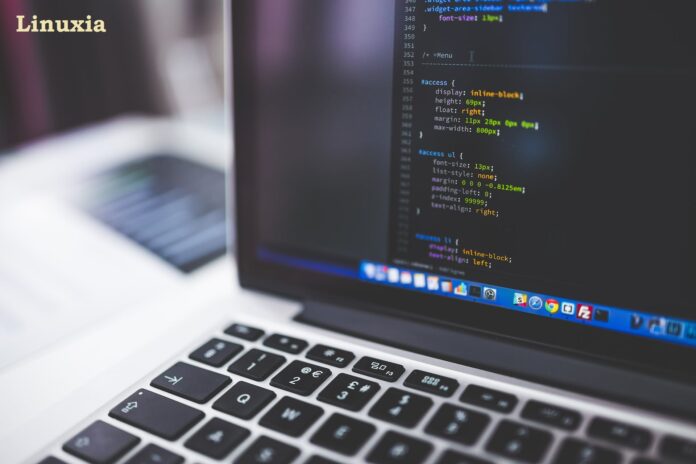Linuxia, a term coined to reflect the expansive and versatile world of Linux-based operating systems, represents a robust alternative in the realm of computing. Unlike its proprietary counterparts, Linuxia thrives on the principles of openness, collaboration, and customization. This article delves into the multifaceted aspects of Linuxia, from its origins to its current impact on modern technology.
Introduction to Linuxia
Linuxia emerges as a distinct entity within the broader Linux ecosystem. At its core, Linuxia embodies the fundamental philosophy of Linux – freedom and flexibility. Initially developed as a Unix-like operating system kernel by Linus Torvalds in 1991, Linuxia has since evolved into a diverse family of distributions (distros), each tailored to meet specific user needs and preferences.
Historical Background of Linuxia
The inception of Linuxia traces back to Linus Torvalds’ visionary idea of creating a free and open-source operating system kernel. With contributions from a global community of developers, it quickly gained momentum, fostering innovation and driving technological advancements across various industries.
Key Features and Functionalities
Linuxia boasts a rich array of features that contribute to its widespread adoption:
Security and Stability in Linuxia
One of Linuxia’s defining characteristics is its robust security architecture. With built-in security features such as mandatory access controls (MAC) and secure boot mechanisms, Linuxia offers heightened protection against malware, viruses, and unauthorized access attempts.
Customizability and Open-Source Nature
Linuxia’s modular design allows users to customize every aspect of their operating system experience. From choosing different desktop environments to installing software packages tailored to specific tasks, Linuxia empowers users to create personalized computing environments.
Getting Started with Linuxia
Embarking on a journey with Linuxia begins with understanding its installation process and system requirements:
Installation Guide for Linuxia
Installing Linuxia involves several steps:
System Requirements
Before installation, ensure your hardware meets the minimum specifications recommended by your chosen Linuxia distribution. Typically, these requirements include processor speed, RAM capacity, and disk space.
Step-by-Step Installation Process
- Choose a Distribution: Select a Linuxia distribution that aligns with your preferences, such as Ubuntu, Fedora, or Debian.
- Create Installation Media: Download the distribution’s ISO file and create a bootable USB drive or DVD.
- Boot from Installation Media: Insert the bootable media into your computer and restart. Follow on-screen instructions to initiate the installation process.
- Partitioning and Installation: Choose disk partitions, configure user settings, and proceed with the installation. Once completed, restart your system to begin using Linuxia.
User Interface and User Experience in Linuxia
Linuxia offers a diverse range of desktop environments, each with its unique layout and functionality:
Navigating the Desktop Environment
Explore popular desktop environments such as GNOME, KDE Plasma, and XFCE. These environments provide intuitive interfaces, customizable workflows, and integrated tools for seamless navigation and productivity.
Customization Options and Tools
Enhance your Linuxia experience by customizing desktop themes, icons, and system settings. Utilize package managers like apt (Advanced Package Tool) or yum (Yellowdog Updater Modified) to install software packages and utilities tailored to your workflow requirements.
Applications and Software Ecosystem in Linuxia
Linuxia’s software ecosystem encompasses a vast repository of applications catering to diverse user needs:
Native Applications vs. Third-Party Software
Discover native applications developed specifically for Linuxia, such as LibreOffice for productivity tasks and GIMP for graphic design. Additionally, leverage third-party software and open-source alternatives to popular proprietary applications, ensuring compatibility and functionality across various domains.
Productivity Tools and Office Suites
Explore comprehensive office suites like LibreOffice and WPS Office, offering word processing, spreadsheet management, and presentation creation capabilities. These tools support interoperability with Microsoft Office formats, facilitating seamless document exchange and collaboration.
Multimedia and Entertainment Options
Linuxia provides a rich multimedia experience with multimedia players like VLC Media Player and media creation tools such as Audacity for audio editing and Blender for 3D modeling. Enjoy streaming services, gaming platforms, and digital content creation tools designed to enhance entertainment and creative endeavors.
Linuxia for Developers and Programmers
It serves as an ideal platform for software development and programming endeavors:
Programming Languages Supported
Linuxia supports a wide array of programming languages, including Python, Java, C/C++, and Ruby. Developers benefit from integrated development environments (IDEs) such as Visual Studio Code, JetBrains IntelliJ IDEA, and Eclipse, offering robust features for code editing, debugging, and version control.
IDEs and Development Environments
Explore specialized development environments tailored to specific programming languages and frameworks. Integrate version control systems like Git and Subversion for collaborative software development and repository management.
Security Measures and Best Practices in Linuxia
Maintaining robust security protocols is paramount in it:
Built-in Security Features
Benefit from built-in security features such as firewall configuration, SELinux (Security-Enhanced Linux), and AppArmor, safeguarding against potential threats and vulnerabilities. Implement regular system updates and security patches to mitigate emerging risks and ensure the integrity of your Linuxia installation.
Regular Updates and Patch Management
Stay informed about security advisories and updates released by your Linuxia’s distribution. Use package management tools to apply updates promptly and maintain system stability and resilience against evolving cyber threats.
Data Encryption and Privacy Enhancements
Implement data encryption techniques such as LUKS (Linux Unified Key Setup) and GPG (GNU Privacy Guard) to protect sensitive information and maintain user privacy. Secure communication channels with SSL/TLS certificates and VPN (Virtual Private Network) configurations for encrypted data transmission across networks.
Troubleshooting and Maintenance Tips
Address common challenges encountered in its environments:
Common Issues Faced by Linuxia_Users
Troubleshoot system boot errors, package dependency issues, and application crashes using diagnostic tools like dmesg, journalctl, and gdb. Resolve hardware compatibility issues, optimize system performance, and monitor resource utilization to maintain a stable and efficient its installation.
System Maintenance and Performance Optimization
Perform routine system maintenance tasks to enhance its performance:
Regularly update software packages and libraries using package managers. Remove obsolete packages and temporary files to free up disk space and improve system responsiveness. Monitor system logs and resource usage metrics to identify bottlenecks and optimize system configurations for optimal performance.
Future Trends and Innovations in Linuxia
Monitor developments in containerization technologies such as Docker and Kubernetes, enabling efficient deployment and management of applications in Linuxia environments. Embrace advancements in artificial intelligence (AI), machine learning (ML), and edge computing to leverage Linuxia’s scalability and performance capabilities in new and innovative domains.
Predictions for the Evolution of Linuxia
As it continues to evolve, several trends and innovations are poised to shape its future trajectory:
Emerging Technologies and Adaptations
Explore the integration of emerging technologies such as artificial intelligence (AI), machine learning (ML), and Internet of Things (IoT) into its ecosystems. Innovations in AI-powered applications, deep learning frameworks like TensorFlow, and edge computing capabilities are enhancing Linuxia’s role in data-intensive and real-time processing environments.
Containerization and Cloud Native Applications
Embrace the paradigm shift towards containerization and cloud-native architectures in its environments. Technologies like Docker, Kubernetes, and OpenShift are revolutionizing software deployment, scalability, and orchestration, empowering developers to build and manage microservices-based applications efficiently.
Security and Privacy Enhancements
Anticipate advancements in security and privacy features within its distributions. Enhanced encryption standards, improved access controls, and proactive threat detection mechanisms strengthen Linuxia’s resilience against cyber threats and safeguard user data in increasingly interconnected digital landscapes.
User Experience and Accessibility
Enhance user experience with intuitive desktop environments, accessibility features, and seamless integration across devices. It distributions are focusing on user-centric design principles, responsive UI frameworks, and accessibility standards to cater to diverse user needs and preferences.
Environmental Sustainability and Green Computing
Promote environmental sustainability through energy-efficient computing practices and resource optimization strategies in it. Initiatives such as power management tools, low-power hardware support, and eco-friendly data center solutions underscore Linuxia’s commitment to reducing carbon footprint and promoting green computing initiatives globally.
Conclusion
Linuxia stands at the forefront of innovation and openness in the operating system landscape. With its robust features, customizable nature, and strong community support, it continues to empower users and organizations worldwide. Whether you’re a developer, enthusiast, or enterprise user, it offers unparalleled flexibility, security, and performance to meet diverse computing needs.
FAQs About Linuxia
1.Is Linuxia difficult to learn for beginners?
Linuxia distributions vary in complexity, but many offer user-friendly interfaces and extensive documentation to support newcomers.
2.Can I run Linuxia alongside Windows or macOS?
Yes, it distributions often support dual-boot configurations, allowing users to choose between operating systems during startup.
3.Which Linuxia distribution is best for gaming?
Distributions like Ubuntu, Pop!_OS, and Manjaro are popular among gamers due to their compatibility with gaming platforms like Steam and robust graphics driver support.
4.How often should I update my Linuxia system?
It’s recommended to install updates regularly to benefit from security patches, new features, and performance improvements provided by the its community.
5.What are the advantages of using Linuxia over proprietary operating systems?
Linuxia offers advantages such as cost-effectiveness, customizability, community support, and freedom from licensing restrictions associated with proprietary software.
Read more interesting articles on DigitalNewsAlerts.



